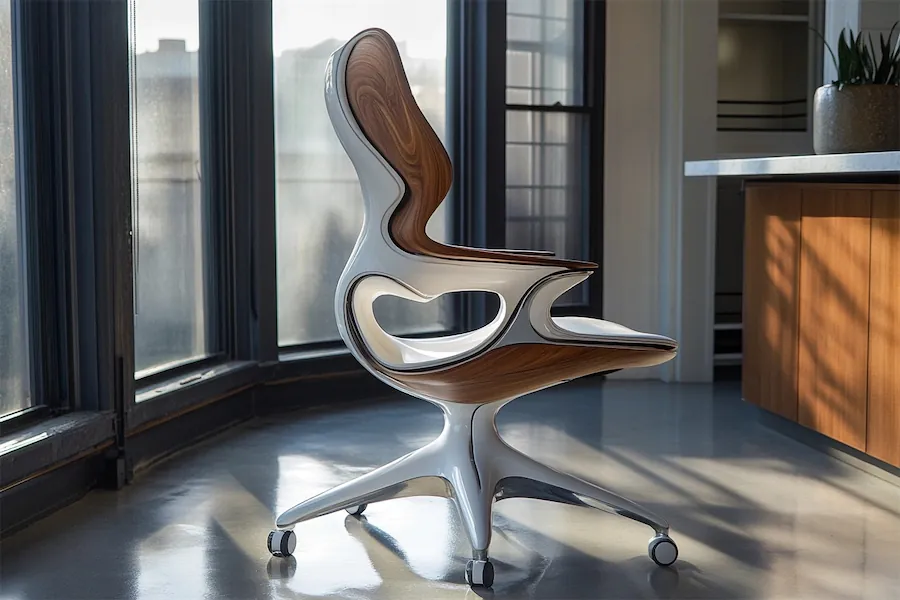Ergonomic chairs are meticulously designed to support the human body’s natural posture, enhance comfort, and reduce the risk of musculoskeletal issues during prolonged sitting. This article explores their history, key features, applications, considerations for selection, and concludes with their significance in promoting health and productivity.
History and Origins of Ergonomic Chairs
The concept of ergonomics, derived from the Greek words “ergon” (work) and “nomos” (laws), focuses on designing tools and environments that complement human physiology. The evolution of ergonomic chairs gained momentum in the mid-20th century as office work became more prevalent, necessitating furniture that could support workers’ health and efficiency. Innovations by designers like Bill Stumpf and Don Chadwick led to iconic ergonomic chairs such as the Herman Miller Aeron Chair, introduced in 1994, which set new standards for office seating with its emphasis on adjustability and support.
Key Features of Ergonomic Chairs
- Adjustability: Components such as seat height, armrests, lumbar support, and backrest angle can be customized to fit individual user needs.
- Lumbar Support: Designed to maintain the natural curve of the spine, reducing strain on the lower back.
- Seat Depth and Width: Accommodates users of varying sizes, ensuring proper thigh support without pressure behind the knees.
- Swivel and Mobility: Allows for easy movement and access to different areas of the workspace without straining.
- Breathable Materials: Utilizes fabrics like mesh to promote airflow, maintaining comfort during extended use.
Applications of Ergonomic Chairs
- Office Environments: Widely used in workplaces to enhance employee comfort and productivity.
- Home Offices: Increasingly popular among remote workers seeking to create a healthy work setup.
- Specialized Professions: Employed in fields requiring prolonged sitting, such as gaming, design, and programming.
Considerations When Choosing an Ergonomic Chair
- Adjustability: Ensure the chair offers multiple adjustment options to cater to your specific body dimensions and preferences.
- Material Quality: Look for durable, high-quality materials that provide comfort and longevity.
- Lumbar Support: Prioritize chairs with effective lumbar support to maintain proper spinal alignment.
- Budget: While ergonomic chairs can be an investment, options are available across various price ranges.
- Trial Period: If possible, test the chair to assess comfort and suitability before making a purchase.
Conclusion
Ergonomic chairs play a crucial role in promoting health and productivity by providing support tailored to the human body’s natural posture. When selecting an ergonomic chair, consider factors such as adjustability, material quality, and lumbar support to ensure it meets your individual needs and contributes to a comfortable and efficient workspace.
